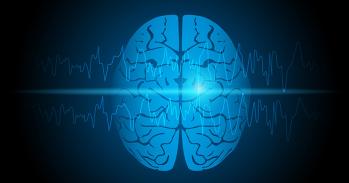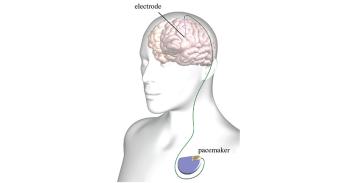New study to reveal what happens to the human brain as we mature; research will also provide insight into the development of mental disorders
New study to reveal what happens to the human brain as we mature; research will also provide insight into the development of mental disorders
You could imagine that it might be possible to develop computerised games or other training programmes that could help adolescents develop advance cognitive skills
Ed Bullmore
Despite adolescence being a high-risk time for developing major psychiatric and drug dependence disorders, very little is known about the teenage brain.
A novel research project jointly led by scientists from the University of Cambridge and UCL (University College London) aims to shed light on what happens to the brain as young people mature as part of a £5.4 million project funded by the Wellcome Trust.
Profiled last night on the BBC News, the U-Change study will use brain scans, questionnaires and genetic testing on 300 people between the ages of 14 and 24 to improve our understanding of how different parts of the brain develop.
Professor Ed Bullmore, lead researcher on this project from the University of Cambridge, said: “The teenage brain struggles with controlling impulsive and emotional behaviour – as most parents of an adolescent can attest. Our research will hopefully shed light on what happens to their brains as they mature.
“It seems very likely that the major cognitive, emotional and behavioural changes of adolescence will turn out to be related to the alterations that occur in brain networks during this period.”
This is the first study of its kind to use both conventional MRI to examine normal youth brain development by taking scans over a period of several years and fMRI, a type of brain scan that enables scientists to see blood flow which represents brain activity and will allow researchers to measure brain function in the same subjects.
Additionally, the volunteers will be asked to answer questionnaires to assess socio-demographics, mental well-being, environment, etc., as well as undergo tests to assess their impulsive and risk-taking behaviour. In order to examine what role genetics may play in brain development, the scientists will also collect saliva and/or blood samples.
Professor Bullmore believes that changes in the wiring of the brain as adolescents mature eventually enable young adults to bring their impulsive behaviour under control. He remarked to the BBC, “I think we are going to find that decision-making processes in the younger teenagers are driven by short-term considerations, immediate emotional states and immediate past history of what was rewarding.”
But he is hopeful that their research could inform interventions which might expedite the process, adding: “You could imagine that it might be possible to develop computerised games or other training programmes that could help adolescents develop advance cognitive skills faster than they otherwise would.”
John Williams, Head of Neuroscience and Mental Health at the Wellcome Trust, said: “We need to understand what happens in the brain as part of normal development before we can start to work out what goes wrong in psychiatric disorders. This research will be key to understanding how these disorders develop and we hope will help to find better treatments.”
The study, which is sponsored by the University of Cambridge and the Cambridgeshire and Peterborough NHS Foundation Trust (CPFT), may eventually enable doctors to identify individuals at high risk of developing a psychiatric or drug dependence disorder and to improve intervention. Additionally, by refining our understanding of how these disorders develop, it has the potential to advance treatments for these young people.
The U-Change study is part of a larger programme called the Neuroscience in Psychiatry Network (NSPN), which has been funded by a £5.4 million Strategic Award from the Wellcome Trust to the University of Cambridge and University College London. Future studies as part of the NSPN programme will build on research from the U-Change study on normal brain and mind development but will focus more directly on how psychiatric disorders such as depression, conduct disorder and psychosis arise.
About the video
This video displays a 4 dimensional image that was acquired of the participant's brain and it is called Diffusion tensor imaging (DTI). The image encodes data that can be used to generate measurements of white matter organisation, one of the two components of the central nervous system, and tract orientation.
Through these images it is possible to examine local microstructural characteristics of water diffusion that relate to white matter properties in the brain and to examine how different brain regions are connected.
This work is licensed under a Creative Commons Licence. If you use this content on your site please link back to this page.





